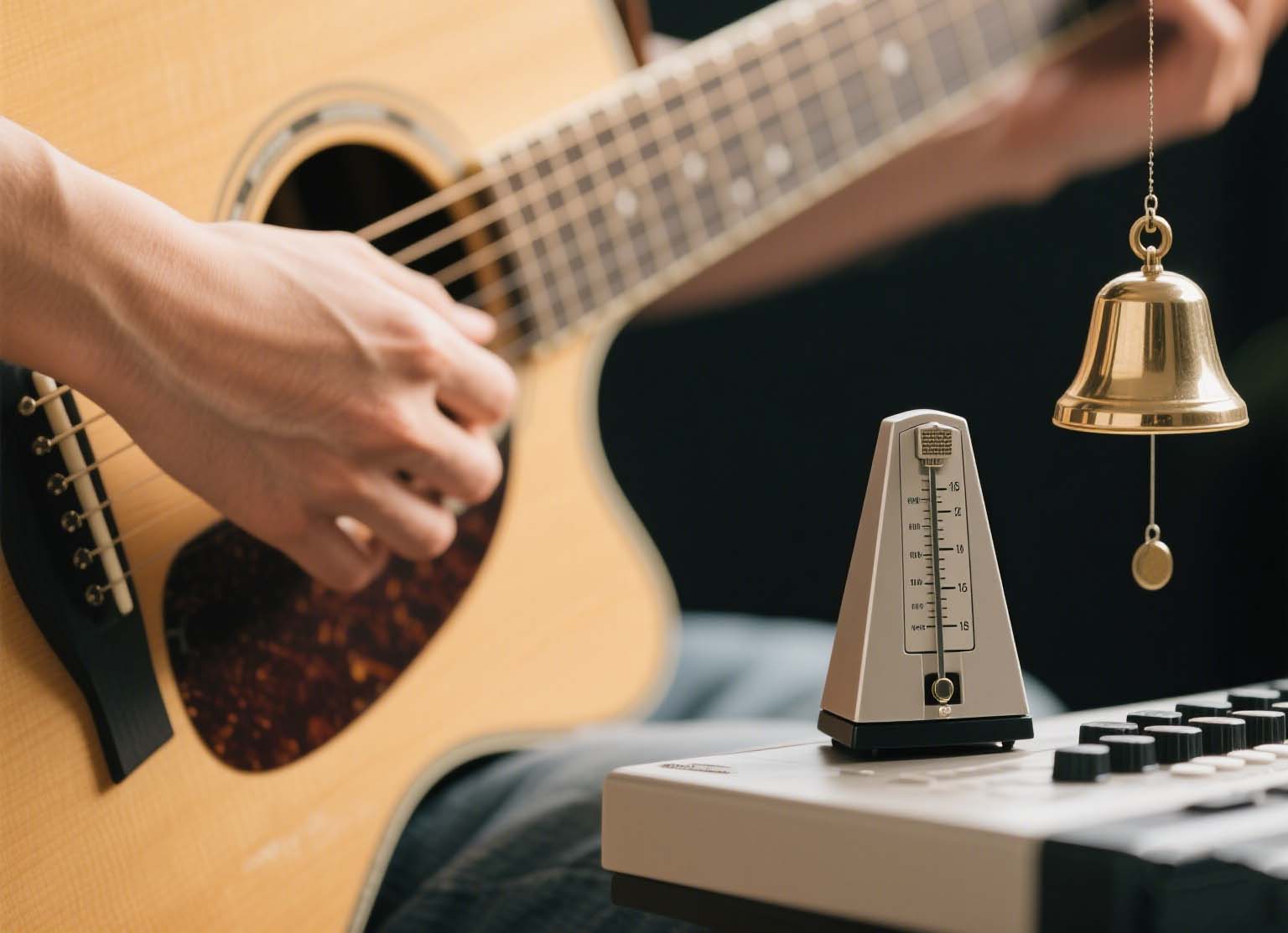Many musicians find themselves in a frustrating situation: despite months or even years of diligent practice with a metronome, they still struggle with timing issues like rushing, dragging, or inconsistent rhythm. Even more puzzling, while each note might align perfectly with the metronome's click, the overall performance lacks flow and feels mechanical. Why does this happen?
The Root of the Problem: Process vs. Result
The fundamental issue lies in this truth: a metronome can only verify results, not correct the process. Think of it like archery - hitting the bullseye depends on your stance, breathing rhythm, muscle control, and mental focus before releasing the arrow, not on adjustments made after the shot. Similarly, precise rhythm in music stems from a series of preparatory actions before each note - your mental anticipation of time, finger positioning, muscle engagement, and even breathing coordination.
Why Pre-Strike Actions Matter Most
1. Mental Time Perception: Brain Prediction Beats Auditory Feedback
When the metronome clicks, there's roughly a 0.2-second delay between hearing the sound and your fingers responding. If you're merely reacting to the sound, you'll always be behind. True rhythmic precision requires your brain to anticipate and initiate movement before the click, just as an archer must align their shot through breathing and muscle memory before releasing the arrow.
2. Muscle Memory: Movement Consistency Determines Stability
Inconsistent finger placement and wrist tension lead to timing variations. For instance, varying finger heights on piano keys affects strike speed, while rigid or overly relaxed wrists during drumming create inconsistent stick rebounds. These physical inconsistencies create micro-timing errors that accumulate into noticeable rushing or dragging.
3. Instrument Control: Technical Limitations Compromise Rhythm
Unfamiliarity with your instrument forces your brain to divide attention between technical challenges (like awkward guitar position shifts or insufficient breath support in wind instruments) and rhythm maintenance. Even with a metronome, movements become distorted by technical bottlenecks - like an archer whose shot goes awry due to a suddenly sticking bowstring.
Effective Practice Methods: From Passive Following to Active Control
1. Staged Practice: Internal Pulse First, Then Metronome
- Stage One: Build Body Awareness Without Metronome
Tap a steady rhythm on your leg while keeping time with your foot, or vocalize "ta-ta-ta" patterns to develop an internal time pulse. - Stage Two: Listen Without Following
Set the metronome to a slow tempo (e.g., 60 BPM), count four beats silently, and only start playing once your internal pulse aligns with the clicks.
2. Anticipation Training: Developing Precision in Silence
- Silent Beat Practice
Configure the metronome to sound only on beat one of each measure, forcing your brain to maintain rhythm through the silent beats. - Pre-emptive Movement
Begin your playing motion half a beat before the click (timing the sound to coincide with the click), simulating the anticipation needed in real performance.
3. Movement Analysis: Calibrating Every Detail
- Slow Motion Practice
Work at half or quarter speed to observe and standardize finger height, wrist angle, and overall movement efficiency. - Mirror Feedback
Practice in front of a mirror to check for tension in shoulders and neck, and eliminate unnecessary body movement that might affect rhythmic stability.
Mindset Adjustment: Rhythm as Flowing Breath, Not Mechanical Precision
1. Embrace Short-Term Imperfection for Long-Term Stability
Building muscle memory requires at least three weeks of consistent practice. Initial awkwardness is simply your brain rewiring neural pathways. Allow yourself to make mistakes, but always analyze after practice: Was the anticipation too early? Did movements feel restricted?
2. Shift Focus from Timing to Musical Expression
Rhythm is essentially emotional flow. Try these approaches:
- Compare the same melody with both strict and flexible timing (like jazz swing), understanding how rhythm serves the music
- Think of "dancing with" rather than "submitting to" the metronome
3. Ultimate Test: Your Body as the Timekeeper
You've truly internalized rhythm when you can maintain steady time through breathing and foot tapping, even while walking and playing, without a metronome.
Conclusion: Rhythm as a Three-Way Dialogue
Like the target in archery, a metronome's purpose isn't to fixate on results but to guide your process - coordinating breath, calibrating movement, and focusing mind. True rhythm masters have internalized the metronome as a natural heartbeat, making each note as natural as breathing. If you're still struggling with rhythm, return to basics: let go of perfectionism and let your body learn the flow of time.





